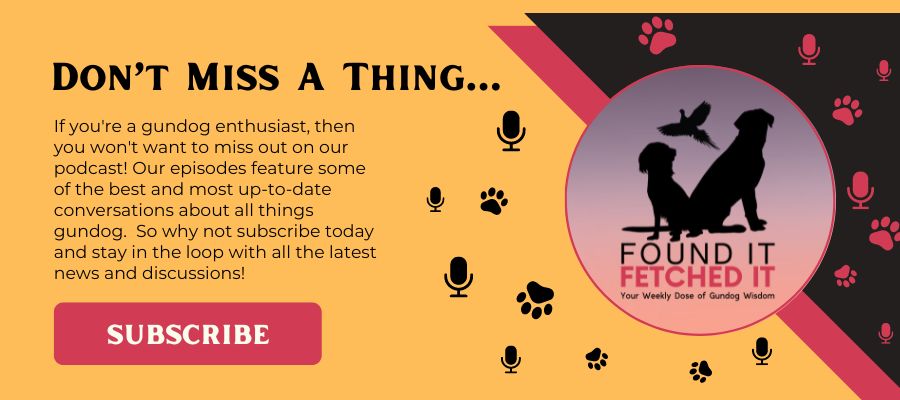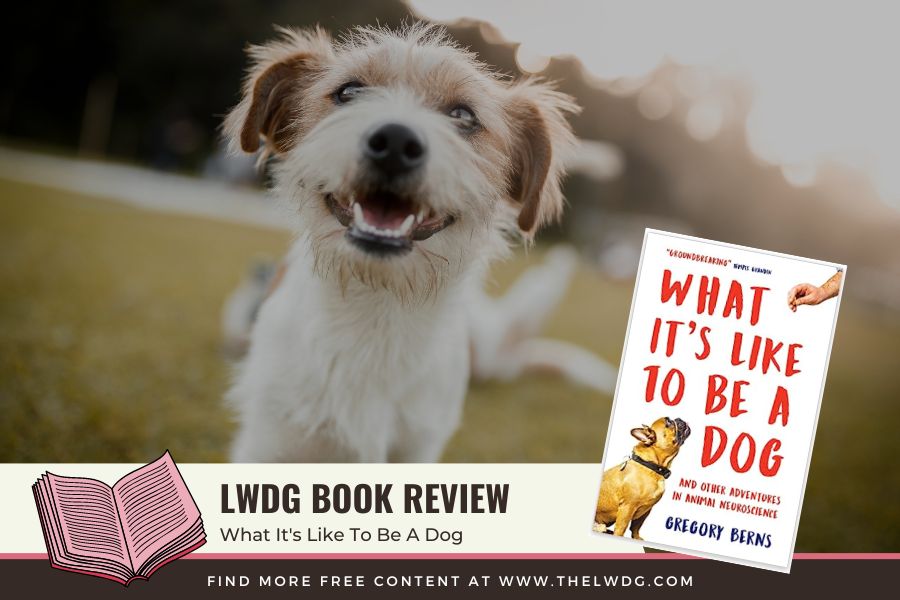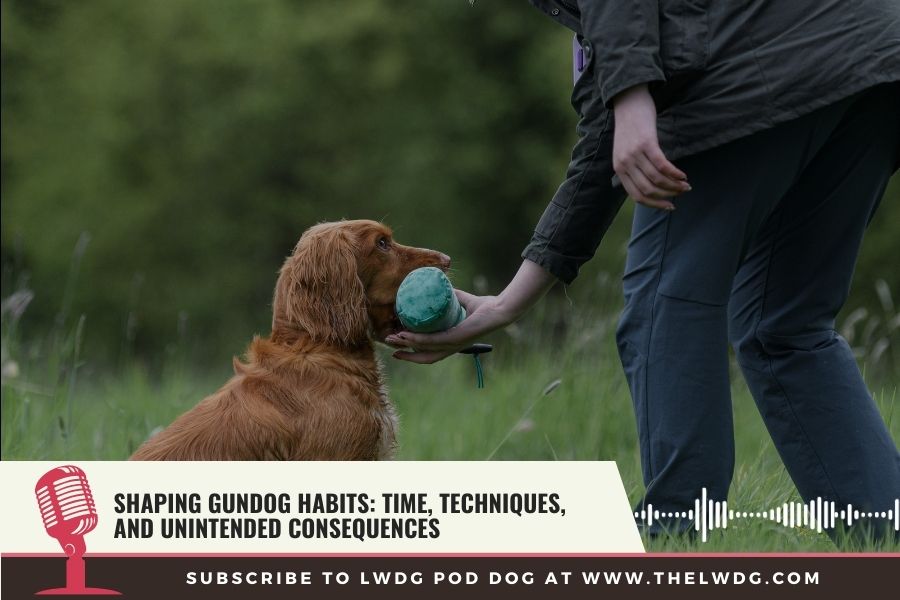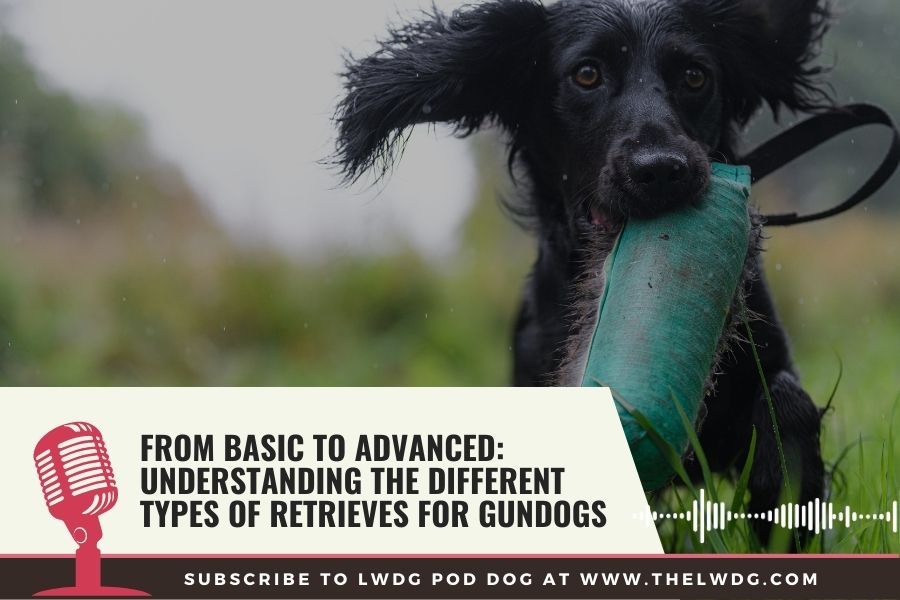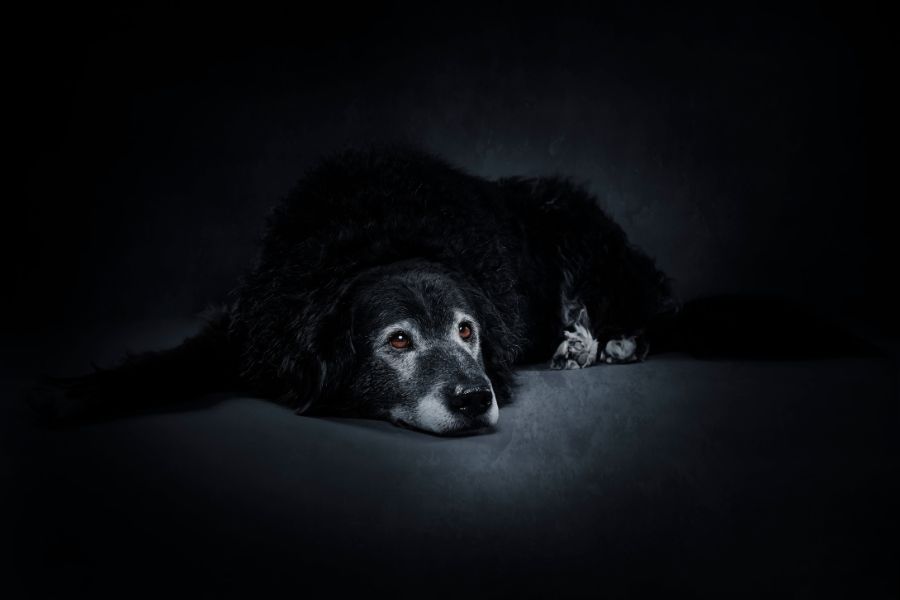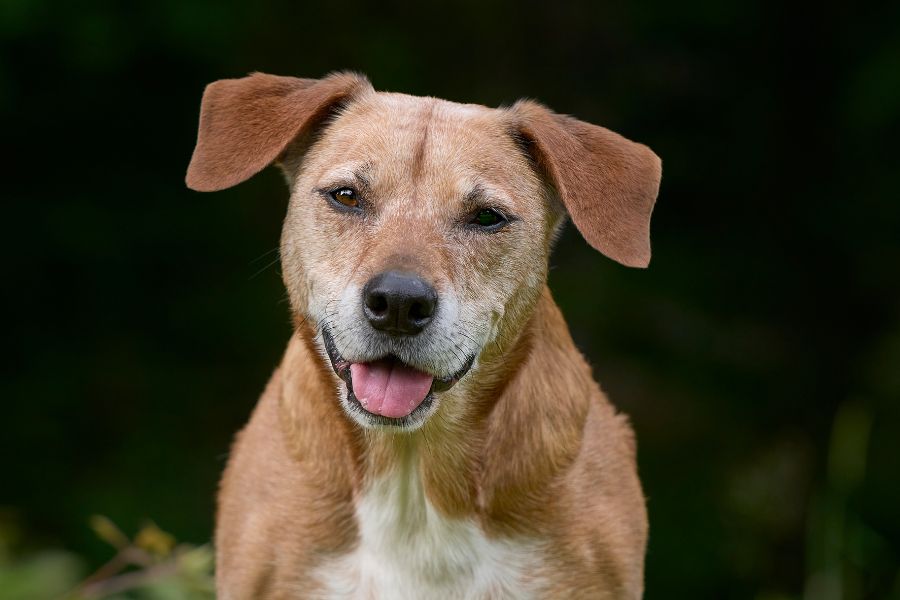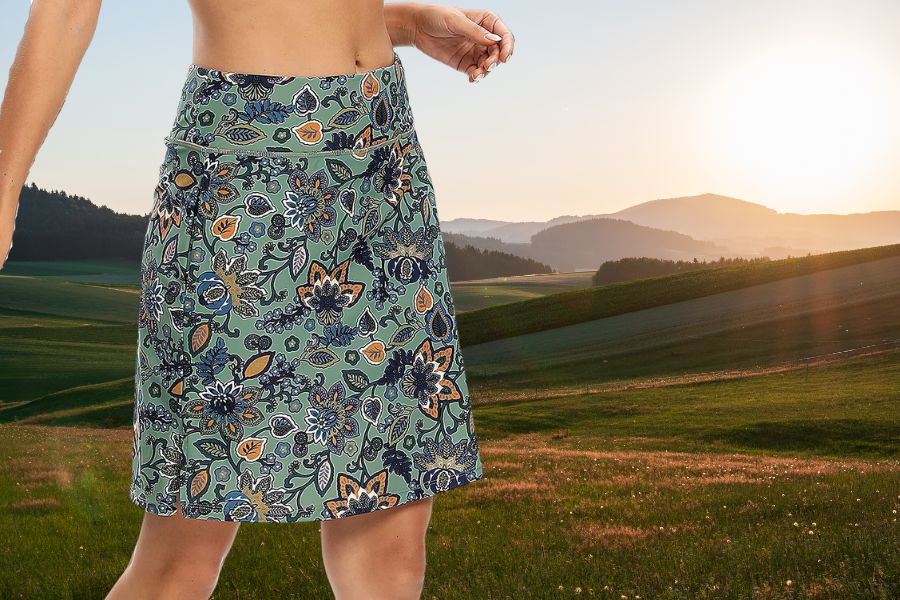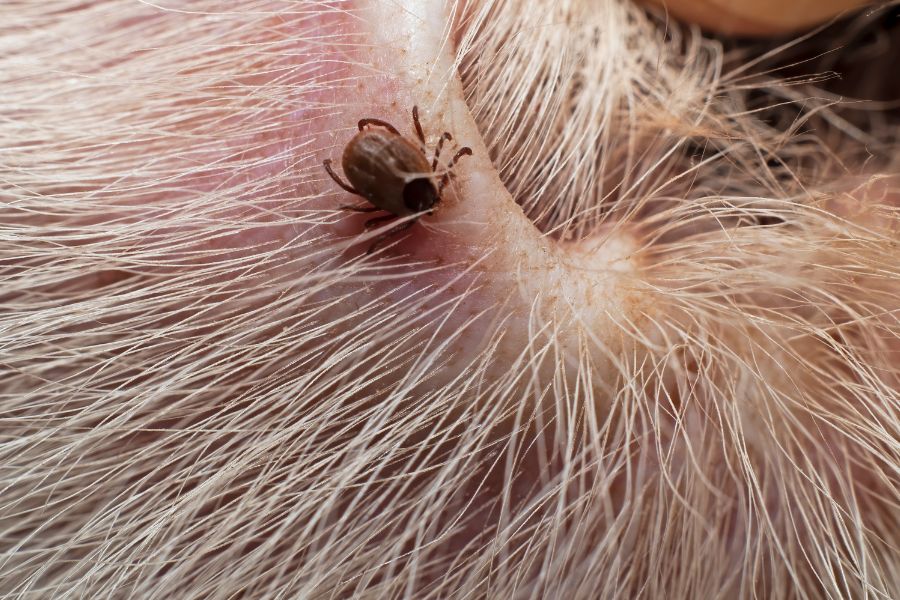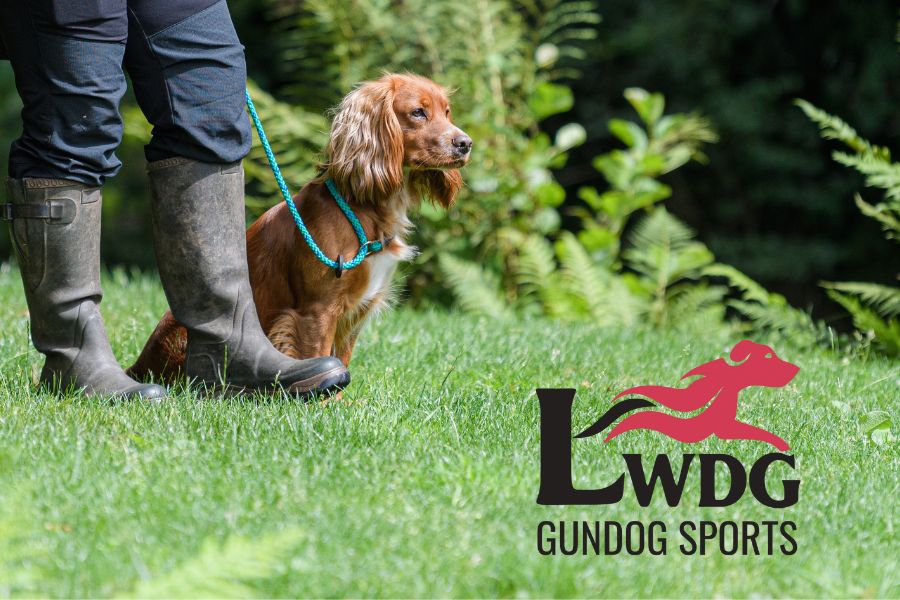On April 8th, 10 LWDG members and their retrievers travelled to Skipton for an Introduction To Working Tests training day. LWDG Group Expert and Region Trainer Emma Stevens from Cunningshot Dog Training ran the workshop. The day they were focused on bringing new owners into the world of competitions without the pressure of entering a working test to experience what it’s actually like.

Getting Started
The day began with a meet and greet over tea/coffee and pastries. Trainers Emma and Adam, along with their team of helpers, introduced themselves and lined out the expectations and running order of the day.
Emma then asked members to introduce themselves, their dogs, and their ambitions and expectations for the day. This allowed all owners to get to know each other and remove any worry of people feeling left out or not spoken to.
Emma spoke about how to get involved in KC working tests and what to expect when you turn up to a working test. Topics covered were the FTMS system, how to join gundog clubs, how to enquire about tests, differences between; Puppy Tests, Novice Dog/Novice Handler, Novice and Open tests, and what level of exercises to expect on each.
Emma also discussed what to wear, how to greet the judge, tips on how to get the best out of your dog when working under pressure, the scoring system, and eliminating faults. Owners were encouraged to ask questions and share their experiences throughout this discussion.
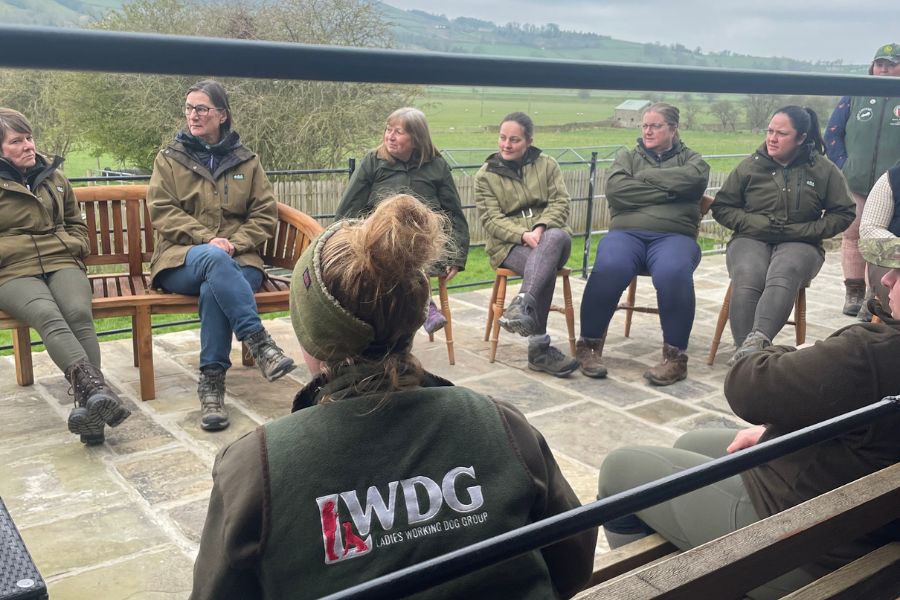
Training Commenced
After this welcome session, the training commenced, starting with foundation obedience, steadiness, walked-up style exercises to test steadiness, and then marked retrieves in channels to shot.
Every handler was able to have both group and individual feedback and the chance to cheer each other on when a dog performed well and hear the feedback from trainers when things didn’t quite go to plan.
It was then time for a quick tea/coffee break with cake! This gave dogs a chance to decompress from what they had learnt and handlers to debrief with the trainers and other handlers on the performances of their dogs.

The Groups
With everyone well-fed and buzzing to learn more, the groups were split into smaller, more intimate groups for more challenging retrieves. Emma worked on split retrieves with an obstacle, and Adam worked on long-distance retrieves with an obstacle.
With only five in a group, it allowed for detailed discussions about what would be expected from a handler on a test in these scenarios. The opportunity for the handlers to give the exercise a few goes to perfect their handling. The groups were then swapped over to allow both groups to experience both exercises.

Mock Test Exercises
After lunch, the owners and dogs had a chance to have a go at three mock test exercises. Test 1 was a mark to shot with a 180-degree distraction, and the dog was to pick the first longer retrieve followed by the second distraction. Test 2 was a mark to shoot over a jump followed by a distraction to the dog’s left. Finally, test 3 was a double mark where the two retrieves were on a V split.
The scoring system, although similar to KC rules and scoring, the judges did not eliminate anyone for usual KC eliminating factors. The judge knocked points for these and wrote next to them with comments of what would be eliminated, helping owners to know what they would have been eliminated for under KC test rules but left no owner with a 0 score for the day.

Final Thoughts…
After the successful completion of the day, Cunningshot Trainers Emma and Adam tallied the scores up and awarded 1st – 3rd prizes and a junior prize to an amazing young handler.
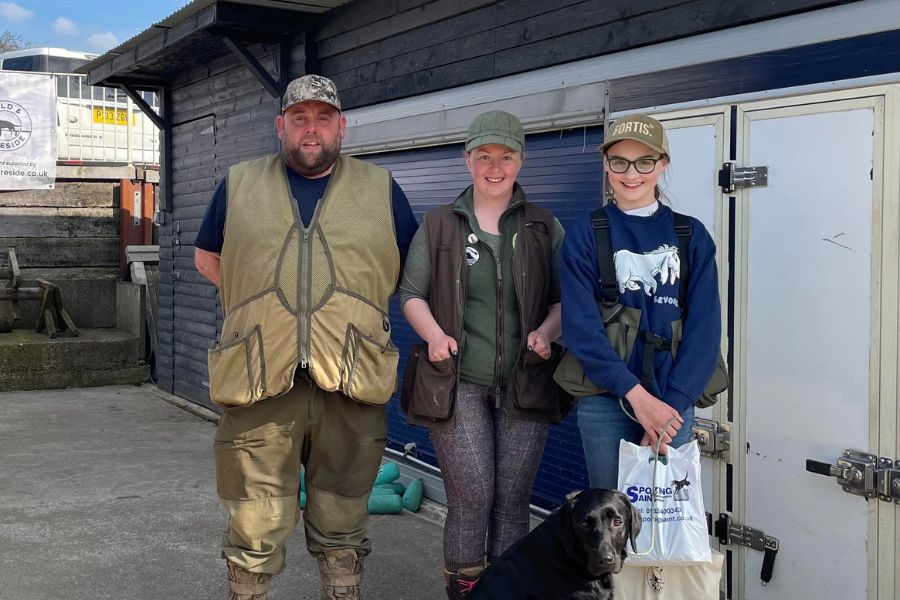

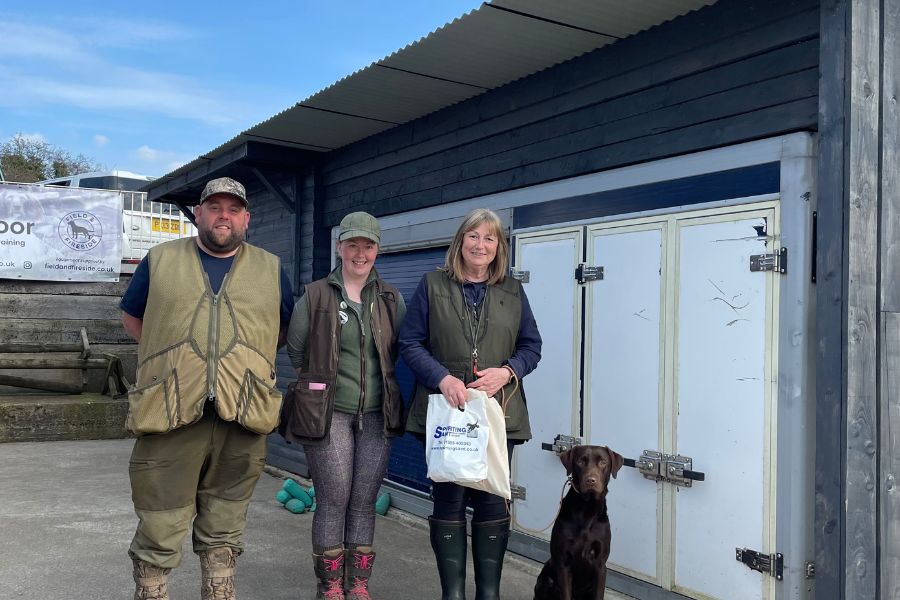
All prizes were courtesy of Sporting Saint and Sue Lister from Field and Fireside. The handlers were also lucky enough to leave with a goody bag each from Sporting Saint and also an LWDG dummy from Field and Fireside.
A huge thanks to Sporting Saint and Field and Fireside for their incredible prizes and a massive special thanks to LWDG member Jane Shaw for opening up her home to host this wonderful event, as well as helpers, LWDG Guest Trainer Becca Doveston, Regional Organiser Sarah Drake, Cunningshot Helper Lucy Massey and Becca’s husband, Martyn Doveston. This event couldn’t have happened without the helpers on the run-up to the day and the day itself.

LWDG Society Member Comments:
Kim – “Thank you for organising such a fabulous day. A lot of thought and hard work has clearly gone into making it such a success. All the helpers, bakers, dummy throwers, and Trainers were amazing. I’ve gained such a lot from the whole experience, including a few pounds from those yummy cakes and croissants. What a fabulous group this is!”
Ves – “Had a great day today; thank you, Emma, Adam, Jane and everyone else who made it possible. Loved the friendly atmosphere, and the training was amazing! So helpful and positive, thank you all.”
Louise – “Thank you all for an amazing day! We had a brilliant time, and I am so grateful for all the knowledge shared; we have learnt so much, and whilst we have so much more to learn, it absolutely feels much less daunting.”
Anne – “Huge thank you to Emma, Adam, Sarah, Jane, and all those that helped and fellow participants and their lovely dogs for such a fab day today. Learned so much from everyone. Still, so much to learn, which is what it’s all about. Thank you all!”
Grace – “Mabel and I have had the best day and learnt so much. We have thoroughly enjoyed meeting you all and your lovely labs and can’t wait to do another. Thank you all for a brilliant day”
Ally – “Wow, what a day and finally a sit down after a fabulous training day with Emma Stevens and Adam from Cunningshot Dog Training. The event was organised by LWDG (Ladies Working Dog Group). This was my first event organised by them, and the amount of effort they put in to ensure we had a good day was amazing. Big thanks to Jane Shaw for hosting us at her beautiful house and booking the sunshine.”
Kim – “I’m a real newbie to LWDG, having found you at the back end of last year and then quickly realising that this was the place for me, becoming a full member in January. I’ve since been privileged to attend 2 events, a fabulous clay pigeon shooting event and then today, an awesome introduction to working tests with Emma and her wonderful team. I can honestly say that each event has been amazing, informative, fun, and educational and has introduced me to wonderful new friends. Emma and
Adam gave us a real feel for what a working test looks and feels like; what to wear, do’s and don’ts, to blow or not to blow If anyone is hesitating, wondering if they’re ‘good’ enough to even think about a working test, then stop hesitating and join in one of these events. You won’t regret it, and you will learn so much, and you’ll get to eat lots of yummy cake, and you might surprise yourself as we did and win a prize”
Sue – “I’ve just been to LWDG Region 1’s introduction to working tests with our trainers, Emma and Adam. I must admit I was a bit nervous as I didn’t know anyone, but I shouldn’t have been as everyone was so lovely. I’ve learnt so much, and it’s given me such a lot of confidence, in that I’m
maybe not as far away from entering my first Novice Dog/Novice handler; just quite a bit of polishing up to do. So, I just wanted to thank everyone who was there, in every capacity, and I’ll definitely be looking out for other events”

LWDG Group Expert Feedback :
Emma Stevens: “I know first-hand how daunting getting into gundogs can be in adulthood compared to being brought up with gundogs, even more so how unfortunately the competitive world can often be sharp and uninviting people who are not ‘known’, which is why I passionately believe these days are so important to give members the confidence to train with like-minded owners for their first exposure to what to expect, be able to ask all the questions that might keep them up at night the day before a test and
know the expected etiquette.
It can take small amounts of pressure off the actual day, which allows a handler’s mindset to focus on themselves and their dog’s work, not panicking about what to expect when they arrive. We started the day with such a relaxed feel, and all members were so happy to share their experiences and ask relevant questions. It really set the day up for what was to be expected.
Both and Adam were super impressed with the standard of dogs and actually changed the tests slightly to make them a bit more challenging for the afternoon. This day was such a lovely introductory day to the competitive world of gundogs and allowed everyone, regardless of their prior knowledge and experience, to ‘give it a go’ in a relaxed and supportive environment.
I also want to thank the sponsors and the helpers on the day as well as Jane, for helping, as without this support, this day wouldn’t be possible. I cannot wait to run more of these and can’t urge members enough to book the upcoming LWDG events.”
Further Events
Society Members can find forthcoming events here


